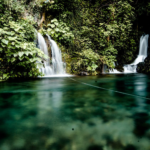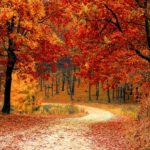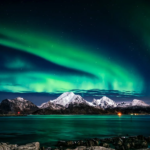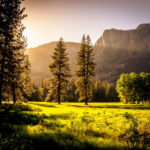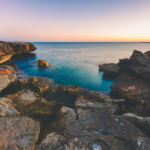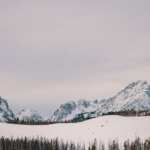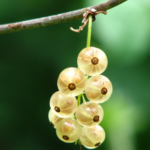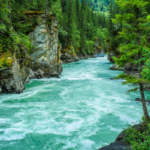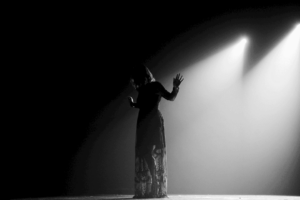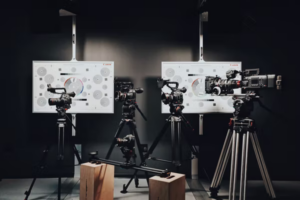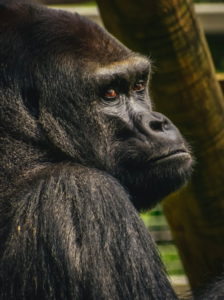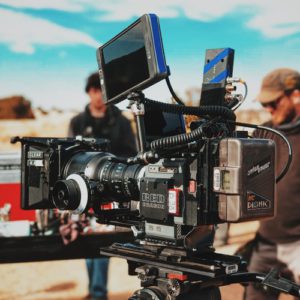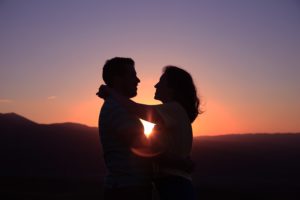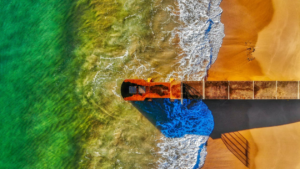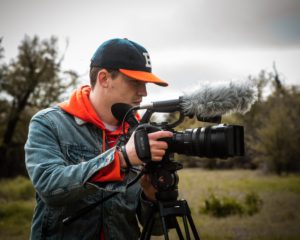Nature photography is a terrific tool that helps you immortalize the fleeting moment before you. As a photographer and a nature enthusiast, you might encounter stunning scenes of nature that you wish to preserve as an artifact for years to come. Through this article, you will discover how to photograph nature at her disposal and the equipment required.

What is Nature photography?
Nature photography is a genre of photography that unlocks the beauty of natural elements in their natural habitat within a frame. It is an umbrella term that covers landscape photography, wildlife photography, and garden photography. The aspects of nature include a variety of subjects ranging from plants, animals, lush greenery in a personal backyard, to a hidden natural wonder that laughs with colors. Further, photographers can also capture the dynamics of seasons as they transition or highlight an environmental concern to call for immediate action, e.g., photographing melting ice caps, extinction of animals, etc.
A strong sense of passion and curiosity about the natural world influences your choice of subject. Your intent to tell a story through your photography skills combined with a fascinating subject, aids you in delivering an epic shot.

Equipment Needed
Nature photography doesn’t require any sophisticated equipment. However, some of the essential gears that you must have to comfortably photograph includes:
Camera Bag
The moment you venture out, you must have all your equipment in one place. For this purpose, you may require a camera bag. Further, it provides you room to store those extra batteries and lenses for your journey.


Appropriate Clothing
Capturing the elements of nature on her lap is not an easy task. Expect to encounter insects and other flies that may harm you. As a result, it is always a good idea to get yourself covered with gloves. Additionally, different shoes may be required to traverse varying landscapes. Another essential accessory is a hat that protects you from harsh direct sunlight.
Other Essentials
Since you will be getting to unknown places, it is good to equip yourself with a compass and an updated location map. Further, you can carry a lens hood to prevent glare while photographing on a sunny day. In case of rain, a waterproof camera cover will protect your camera.
Camera
The crux of nature photography lies in capturing the scale and the specific details of an image. Therefore, you require a DSLR with a crop sensor. A DSLR with a crop sensor helps a photographer zoom-in to a specific area. This allows you to focus on your subject and record its details. Alternatively, you can also use your iPhone or Android device that features smaller apertures, dual lenses, and optical zooming to create compelling images.
Some of the DSLRs with crop sensor body includes:


Lens
Wide-angle and zoom lenses are perfect choices for nature photography. However, despite the type, the lens’s size also impacts the quality of your resultant images.
- Choose the right size
As a result, you have to opt for a 50 mm lens on a crop sensor camera body to capture the intricate details of your subject. Here the crop sensor helps you get closer to your subject.
- Why should you use a Zoom lens for nature photography?
A lens with a longer focal length works best for nature photography, like a zoom lens with a wide aperture to improve magnification. This helps you to:
- Photograph long distant wildlife that you cannot near due to safety concerns.
- When you want your subject to pop out sharply against your blurred background.
- Why should you use a Wide-angle lens for nature photography?
-
- If you want to focus your subject even while showcasing a wide-open space.
- In addition, they offer a greater depth of field.
- They permit more light into them, allowing you to use a faster shutter speed.
Tripod
Image stabilization becomes a challenge, primarily when you shoot outdoors. Therefore, a tripod offers a handy solution to stabilize the camera. Further, it reduces the burden of holding on to the camera while you await that perfect moment. Additionally, it lets you capture the same shot for an extended period, resulting in prolonged exposure.
Videos
Nature Photography | Learning to See with Nature
11 tips for great nature photos that stand out from the crowd
NATURE PHOTOGRAPHY from the Field to Print – YouTube
How to Shoot Nature Photography?
1. Plan Well-Ahead
The moment you choose your location for nature photography, you need to invest a reasonable amount of time knowing the rules and regulations that pertain to it. Additionally, it is always a good idea to keep someone informed about your whereabouts and time of return, even when a partner accompanies you.

2. Respect the Animals and Environment
In your venture to capture the beauty of nature, you must be mindful of what you leave behind after your photography. Ensure you don’t leave any rubbish as it takes its own time to decompose. Further, the world you’re shooting is a living home to many living beings. Hence, refrain from any activity that will disturb the natural environment.

3. Get Your Perfect Shot at the Best Time of the Day
Whether you shoot in a famous landmark or amidst a forest, always choose the golden hour for your shooting. There will be less crowd at a famous landmark during the early mornings or late evenings. Therefore, it lets you focus on these spots with ease. Further, if you are aiming to capture animals in the forest, it is during this time the animals get more active as the heat recedes.

4. Shoot with a RAW Format
Nature photography is all about capturing everything in its raw form. Although shooting in RAW format occupies a significant memory card space, it is the best choice to capture nature as it appears. In addition, capturing RAW images gives you unprocessed final photos, which you can edit later.

5. Choose the Proper Camera Settings
Since you will be shooting in RAW mode, you have to bring more light to your image. For this purpose, use the lowest ISO and adjust your shutter speed accordingly to compensate.

6. Decide on the Type of Subject
Nature photography consists of pretty vast subjects. Therefore, it could be challenging to define your subject. However, they can be classified into two types:
- Large-scale subjects: These include vast and impressive landscapes like mountain ranges, spiraling river bodies, endless deserts, etc. You must spot the randomly occurring colors, shapes, and textures in these extensive landscapes as a photographer. For example, when you locate a pattern of branches amid the forest grove.

- Small-scale subjects: While capturing the big picture in nature photography, you might encounter elements like rock, leaves, petals, tide pools, or branches. These small elements offer an opportunity to explore the biological world. Therefore, you can also photograph them to focus on capturing exciting details. Macro photography is one of the best features you can use to capture nature’s minuscule aspects. For example, capturing the rings of a tree trunk in close-up.

7. Research Your Subject to Capture Better Photographs
Once you decide the type of subject you want to capture, you have to begin studying your subject. This helps you in the following ways:
- When you understand your subject better, you can create better images. For example, a landscape may appear at its best during a specific period. Hence, only through observation will you be able to discover this timeline. Therefore having a proper understanding of your subject is crucial.

- Once you get to know your subject, you know the best time to click them, which lets you predict shots, whether you wish to take a close-up or an overall image.

8. Project a Powerful Image of Your Subject
You can create stunning images when your subjects reside in their natural habitat for nature photography. This brings in a sense of reality to your pictures, making them appear more realistic.

9. Separate the Subject from the Background
You focus on a small-scale subject to capture its details. Hence, to let your viewer focus on the details of your subject, you need to remove the distracting elements of the scene. For example, you can leave a considerable distance between the foreground and the background before placing the details in the frame. Then, focus on the subject in the foreground and use a wide aperture of f/2.0 or f/2.8 to get a blurry or soft background.

10. Get a New Perspective
For this purpose, you can get a higher vantage point, shoot from a lower angle, or experiment with close-up or wide-angle shots.

11. Use the Rule of Thirds
While photographing nature, you can compose your images using the rule of thirds. The rule of thirds is a composition technique that helps you create a balanced picture. This rule breaks a scene into thirds horizontally and vertically, forming nine equal rectangles. The point of intersection of these rectangles is those spots where your viewer’s eyes tend to go. As a result, you need to place your main subjects at these points and click them to generate compelling images.

12. Use Natural Light to Your Advantage
Nature is abundant with light, especially during sunset and sunrise, as it adds a hazy look to your image. Commonly called the golden hour, photographing your subject at this hour evenly distributes light and eliminates shadows. Therefore, it improves the quality of your images.

13. Use Water for Mirror Effects
The process of capturing the reflection of a subject from a water body is called the mirror effect. For example, the reflection of a mountain view from a lake can create a stunning image. Of course, you need to snap this picture at the golden hour to achieve this. Further, a tripod or a shutter priority mode can also aid in producing the accurate image of your subject’s reflection.

14. Crop Close on Textures
While photographing small-scale images, you need to zoom in on their details. For this purpose, you can utilize a macro lens to magnify the details and create an excellent shot. In addition, things you capture may reveal an interesting pattern or texture that stands out.

15. Don’t Stop at Instagram
Nature photography is a beautiful way to appreciate nature. Hence, you can use online sharing tools like Instagram to share your photography. Further, these tools allow you to create a montage of your natural images. You can also create a photobook using these images and create a perfect portfolio to showcase to your clients.
Final Thoughts
Nature is lavish with peace and tranquility. However, you require quite a different skill set to capture those moments with pleasure. To develop these skill sets, you need first to be willing to explore unknown regions of the Earth. Then, perseverance and consistent practice help you achieve mastery which will help you generate the most stunning pictures.
Gallery
